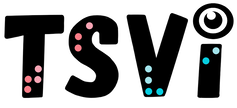- Home
-
Learn
- History of VI >
- Legislation & Laws >
- Vision Professionals >
-
VI Program Resources
>
- Program Printables
- Itinerant Teaching Tips
- Year at a Glance
- VI Program Handbook
- Caseload Analysis
- Organization & Time Management
- Professional Development
- Teacher Standards
- Professional Ethics
- Awards & Recognition
- APH Scholar Program
- Professional Organizations
- Certification Organizations
- Dealing with Challenges
- Professional Publications >
- Relatable Books for All Ages >
- Family Resources >
- Plan
- Basics
-
Teach
- Teaching Strategies >
-
Compensatory Skills Instruction
>
-
Social Skills
>
-
Self Determination
>
- Body Image & Acceptance
- Making Personal Goals
- My Vision Presentation
- My Self-Description
- Create a Personal Data Sheet
- Disclosure Decision
- Disability Statement
- Requesting Help
- Fighting Fears
- My Circle of Support
- Personal Responsibility
- Advocate for Safe Enviroments
- Having Picture Taken
- Coping with Change
- Aging Eyes
- Physical Characteristics
- Political Activism
- Laws Regarding Persons with Disabilities
-
Sensory Efficiency
>
-
Independent Living
>
- Orientation & Mobility Instruction >
- Recreation & Leisure >
-
Career & Vocation
>
-
Grow
- Complete Set Bonus >
-
Recorded Presentations
>
- Webinar: Tips for Being a "Physically Fit" TVI
- Webinar: The Art of Teaching the ECC
- Webinar: Virtual & F2F Strategies
- Webinar: Foundations of Teaching the ECC in the Age of Virtual Instruction
- Webinar: Itinerant Teaching Strategies
- Webinar: Using Themes to Teach the ECC
- Webinar: Conducting a FVLMA
- Webinar: Selecting the Right AT
- Webinar: Developing SMARTER Goals
- Webinar: Determining Service Intensity Using the VISSIT
- Webinar: Activities to Teach the ECC
- Webinar: Accessible Content for BLVI
- Webinar: Accommodations for VI
- Webinar: MIMO Strategies & Activities
- Webinar: SIDPID Strategies & Activities
- Webinar: Standard Course of Study Strategies & Activities
- Webinar: Job Tasks for Job, Career & Life
- Shop
- Jobs
CVI & Multiple Disability Resource BooksThe following are resource books and online resources specific to working with students who are blind or visually impaired with CVI or multiple disabilities. If there are additional resource books you feel should be listed here, please let me know.
Affiliate Link DisclaimerTeaching Students with Visual Impairments is a participant in the Amazon Services LLC Associates Program, an affiliate advertising program designed to provide a means for sites to earn advertising fees by advertising and linking to amazon. As an affiliate, I earn from qualifying purchases. While I appreciate your support, please compare prices from other retailers that sell these products. Thank you in advance for your support! 
Gense, D. Jay & Gense, Marilyn H. Autism Spectrum Disorders and Visual Impairment: Meeting Students' Learning Needs. AFB, 2005. This resource book focuses on the complex and varied effects on learning and behavior that result when a child with an autism spectrum disorder is also visually impaired. The book looks at how autism spectrum disorders interact with visual impairments.

Ferrell, Kay. Reach Out and Teach: Meeting the Training needs of Parents of Visually/Multiply Handicapped Young Children. American Foundation for the Blind, 2011. This revised edition teaches parents and teachers how to promote the development of young children with visual and multiple impairments with today's family concerns the latest research. Includes strategies to promote children's skills and preparation for different stages.
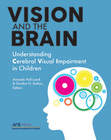
Lueck, Amanda Hall. Vision and the Brain: Understanding Cerebral Visual Impairment in Children. American Foundation for the Blind, 2015. Cerebral visual impairment, also known as cortical visual impairment, or CVI, has become the most common cause of visual impairment in children in the United States and the developed world. Vision and the Brain is a unique and comprehensive sourcebook of current knowledge about CVI and best practices for working with children. Expert contributors from many countries illuminate the complexities of vision loss related to brain injury and neurological causes and provide readers with approaches to assessment and intervention.

Roman-Lantz, Christine. Cortical Visual Impairment: An Approach to Assessment and Intervention. American Foundation for the Blind, 2007. This resource book includes a unique assessment tool developed by Christine Roman-Lantzy and systematic, targeted principles to help students with cortical visual impairment. Includes a framework with which to understand working with CVI and concrete strategies in working with these students.
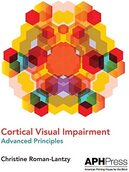
Roman-Lantz, Christine. Cortical Visual Impairment: Advanced Principles, APH Press, 2019. This is a companion book to "Cortical Visual Impairment: An Approach to Assessment and Intervention." The book dives deeper into topics that are extensions of the original concepts. It offers an in-depth examination of the needs of students and individuals with CVI in areas such as literacy, social skills, and O&M, while also addressing the demands of students with CVI and other disabilities, such as complex communication needs and hearing loss. The authors consider students with CVI in the context of their entire day to see how the tasks they perform, the interactions they have, and the environments they encounter can be evaluated and adapted to help them build their visual skills and experience success.
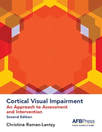
Roman-Lantz, Christine. Cortical Visual Impairment: An Approach to Assessment and Intervention, 2nd edition. American Foundation for the Blind, 2018. The new and revised content in this second edition brings the book up-to-date with new research and insights into CVI, its development and progression, and the best approaches to assessment and intervention with children affected by this condition. As in the previous edition, assessment forms, including the CVI Range and CVI Progress Chart, provide a comprehensive method for evaluating the functional vision status of, and program planning for, children with CVI.

Sacks, Sharon. Educating Students Who Have Visual Impairments with Other Disabilities. Paul H Brooks, 18. A useful tool in understanding and planning educationally for students with visual impairments in addition to other disabilities. This book provides a comprehensive guide to the unique needs of students in both regular and special education classes with visual impairments.

Sacks, Sharon Z. and Zatta, Mary C. Keys to Educational Success: Teaching students with Visual Impairments and Multiple Disabilities AFB Press 2016. Every student has unique learning needs, but addressing the diverse needs of students who have visual impairments and multiple disabilities can be particularly challenging for teachers. Keys to Educational Success helps educators unlock the learning potential of their students by providing key program strategies that can be directly applied to classroom learning routines.
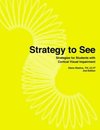
Sheline, Diane. Strategy to See. VeriNova LLC, 2016. Strategy To See is a resource book for parents/caretakers, educators and medical personnel (including but not limited to TVIs, COMS, PTs, OTs, Speech Therapists, Music Therapists, ophthalmologists, optometrists, low vision specialists and Special Education Teachers) of students from birth to 22 years who have a diagnosis of Cerebral/Cortical Visual Impairment or C/CVI. It offers specific strategies and discusses topics including brain plasticity, the importance of early intervention, the use of the CVI Skills, development of IEP Goals and Objectives and several printable handouts are provided.
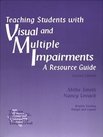
Smith and Levack. Teaching Students with Visual and Multiple Impairments: A Resource Guide. Texas School for the Blind, 1996. This resource guide was written for VI certified teachers serving students in regular, special ed, and resource classrooms. Includes assessment guidelines and strategies for IEP development and instruction. It also includes information on adapting materials and the environment and creating tactual and visual symbols.
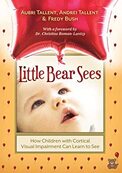
Tallent, Aubri. Little Bear Sees. Little Bear Sees Publishing, of Wyatt-MacKenzie (June 1, 2012). This book about CVI was written by parents for parents. The book explains CVI and the common characteristics, how the eyes and brain work together and provides strategies and ideas for helping the child learn to use his or her vision.
|
History of Visual Impairments
Professional Practice
Vision Professionals
Professionalism
Teacher Resources
Professional Publications
VI Book Resources
|
|
Teaching Students with Visual Impairments LLC
All Rights Reserved |
- Home
-
Learn
- History of VI >
- Legislation & Laws >
- Vision Professionals >
-
VI Program Resources
>
- Program Printables
- Itinerant Teaching Tips
- Year at a Glance
- VI Program Handbook
- Caseload Analysis
- Organization & Time Management
- Professional Development
- Teacher Standards
- Professional Ethics
- Awards & Recognition
- APH Scholar Program
- Professional Organizations
- Certification Organizations
- Dealing with Challenges
- Professional Publications >
- Relatable Books for All Ages >
- Family Resources >
- Plan
- Basics
-
Teach
- Teaching Strategies >
-
Compensatory Skills Instruction
>
-
Social Skills
>
-
Self Determination
>
- Body Image & Acceptance
- Making Personal Goals
- My Vision Presentation
- My Self-Description
- Create a Personal Data Sheet
- Disclosure Decision
- Disability Statement
- Requesting Help
- Fighting Fears
- My Circle of Support
- Personal Responsibility
- Advocate for Safe Enviroments
- Having Picture Taken
- Coping with Change
- Aging Eyes
- Physical Characteristics
- Political Activism
- Laws Regarding Persons with Disabilities
-
Sensory Efficiency
>
-
Independent Living
>
- Orientation & Mobility Instruction >
- Recreation & Leisure >
-
Career & Vocation
>
-
Grow
- Complete Set Bonus >
-
Recorded Presentations
>
- Webinar: Tips for Being a "Physically Fit" TVI
- Webinar: The Art of Teaching the ECC
- Webinar: Virtual & F2F Strategies
- Webinar: Foundations of Teaching the ECC in the Age of Virtual Instruction
- Webinar: Itinerant Teaching Strategies
- Webinar: Using Themes to Teach the ECC
- Webinar: Conducting a FVLMA
- Webinar: Selecting the Right AT
- Webinar: Developing SMARTER Goals
- Webinar: Determining Service Intensity Using the VISSIT
- Webinar: Activities to Teach the ECC
- Webinar: Accessible Content for BLVI
- Webinar: Accommodations for VI
- Webinar: MIMO Strategies & Activities
- Webinar: SIDPID Strategies & Activities
- Webinar: Standard Course of Study Strategies & Activities
- Webinar: Job Tasks for Job, Career & Life
- Shop
- Jobs
